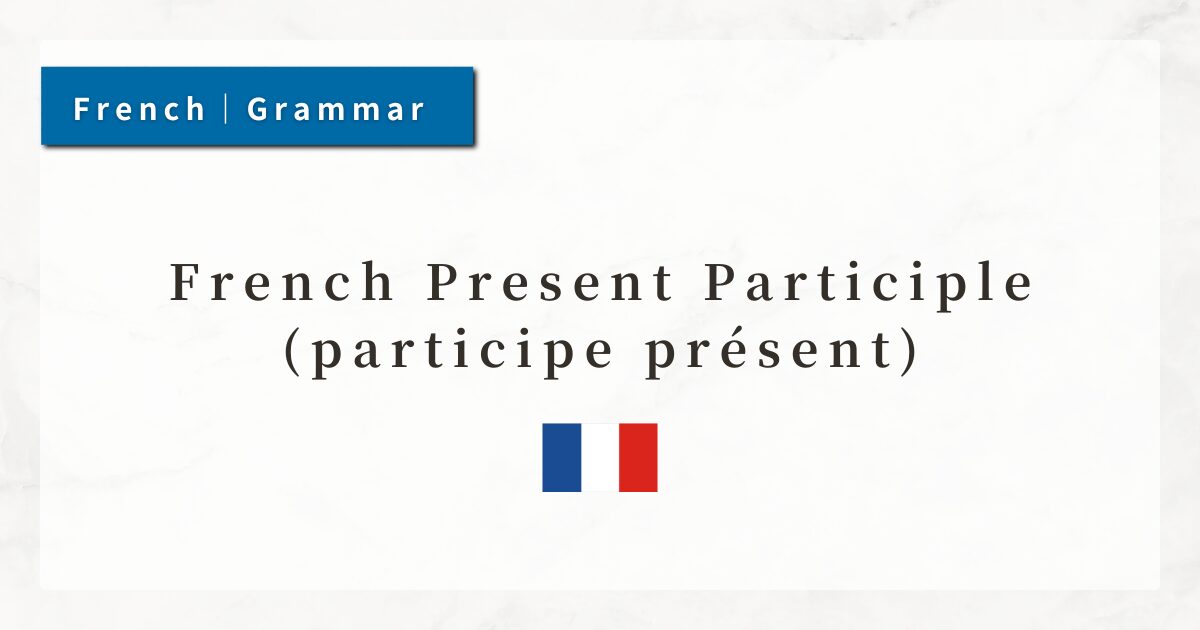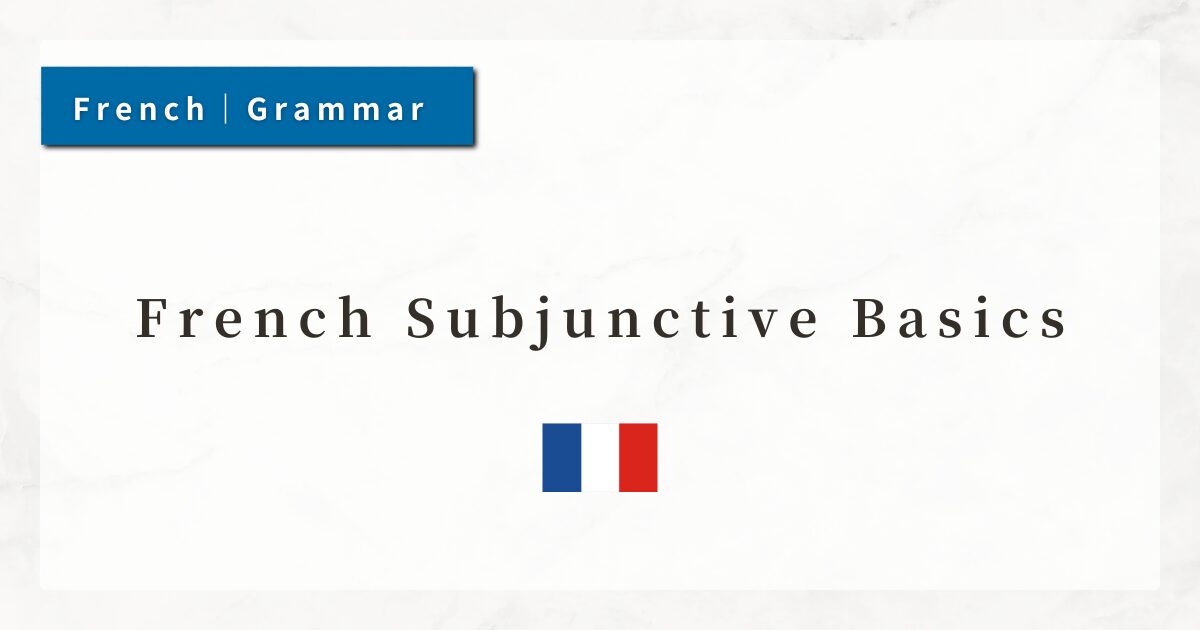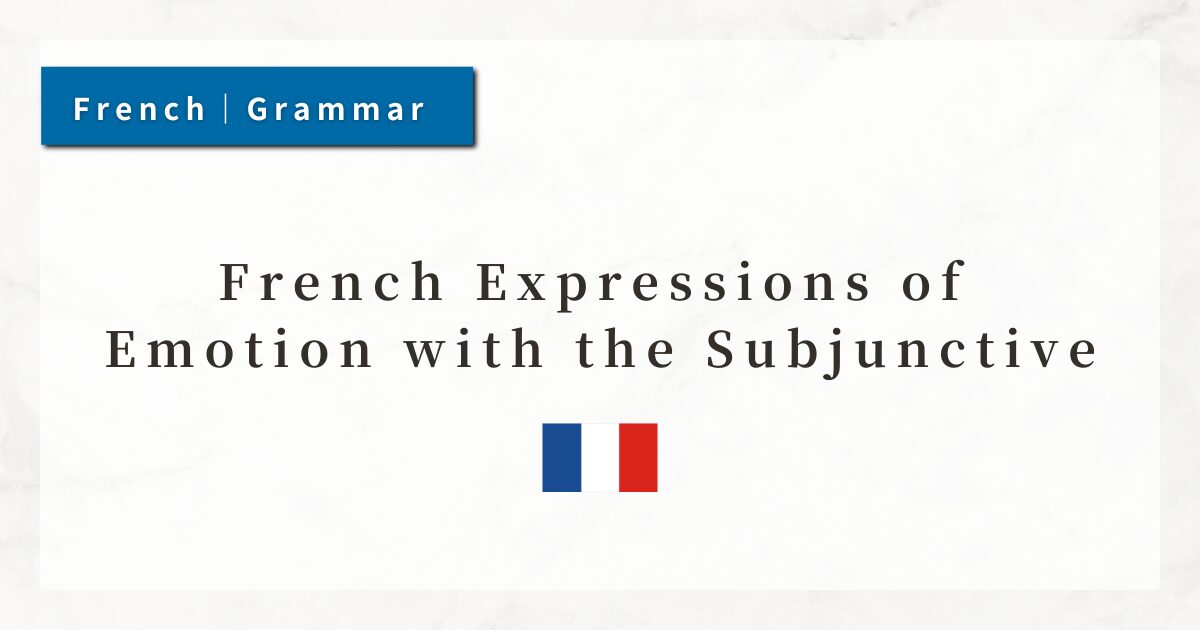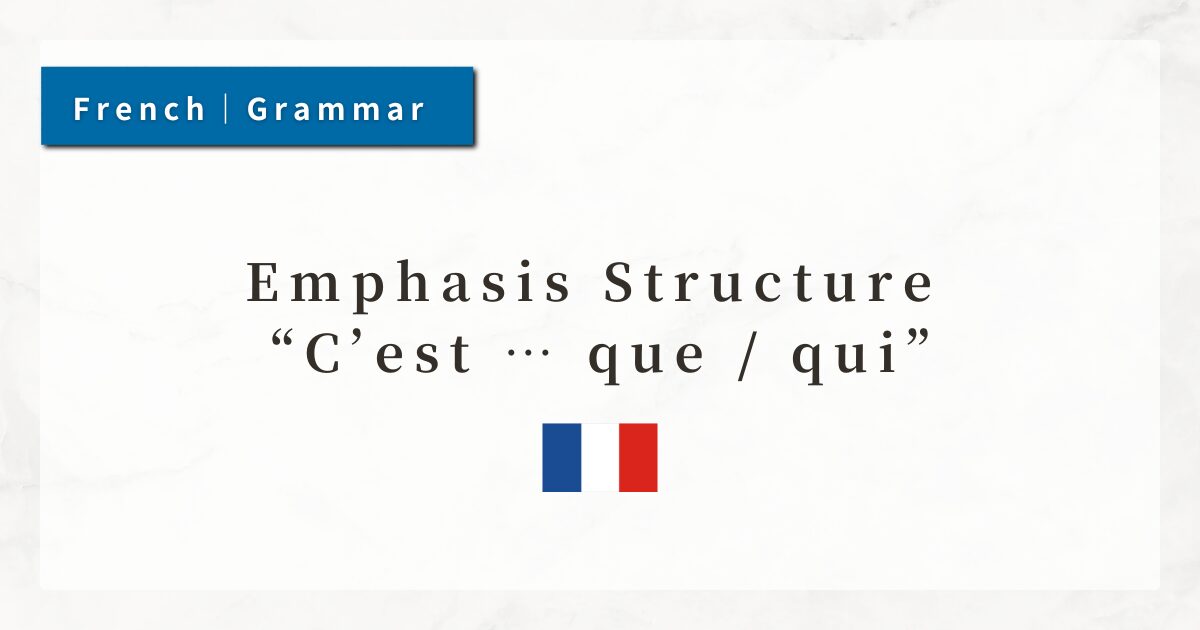#27 How to Use the French Imperfect Tense (Imparfait) | Basic Rules and Usage

The French imparfait (imperfect tense) is used to describe “past habits,” “ongoing states,” “background descriptions,” and “feelings or thoughts.”
In this lesson, I will explain how the imperfect is conjugated, as well as the contexts in which it is used.
1. What Is the Imperfect?
The imperfect is one of the French past tenses. Unlike a past action that is completed at a single moment, the imperfect describes actions or states that continued over a period of time or were repeated.
It is also used for background descriptions in narratives, and to describe emotions, thoughts, or states of being. The imperfect corresponds roughly to English “used to” or “was/were doing.”
2. Conjugation: Stem + Imperfect Endings
The imperfect is formed using the following structure: “Stem of the nous form in the present tense + endings.”
The endings are: “-ais, -ais, -ait, -ions, -iez, -aient.” Exception: only être has an irregular stem, which is ét-.
| Subject | parler (to speak) | finir (to finish) | être (irregular) |
|---|---|---|---|
| je | parlais | finissais | étais |
| tu | parlais | finissais | étais |
| il/elle/on | parlait | finissait | était |
| nous | parlions | finissions | étions |
| vous | parliez | finissiez | étiez |
| ils/elles | parlaient | finissaient | étaient |
3. Uses of the Imperfect
3-1. Ongoing Actions or States in the Past
The imperfect describes actions or states that were still in progress at a certain moment in the past.
This is the key feature of the imperfect: it portrays the past as a “line” (continuity) rather than a “point” (instant).
- Je lisais un livre quand il a téléphoné.
(I was reading a book when he called.)
Here, the imperfect lisais expresses the ongoing action (“was reading”), while the passé composé “a téléphoné” expresses the completed event (“called”).
3-2. Habitual or Repeated Actions
The imperfect is used for actions that occurred repeatedly in the past, such as routines or habits.
This contrasts with the passé composé, which indicates a single completed action.
- Quand j’étais à l’université, je mangeais souvent à la cafétéria.
(When I was at university, I often ate at the cafeteria.)
Here, étais describes the continuous state (“was at university”), while mangeais souvent shows the repeated action (“often ate”).
Use the imperfect when describing events that lasted over a certain period of time, such as “used to” or “was doing.”
3-3. Background or Scene Description
The imperfect is frequently used in stories or personal accounts to describe background conditions, settings, or atmosphere.
- Il faisait froid, la neige tombait lentement, et tout était calme.
(It was cold, the snow was falling slowly, and everything was quiet.)
This creates the effect of painting a scene in progress, as if the reader is witnessing it.
3-4. Emotions, Thoughts, and Internal States
The imperfect is also used to express inner feelings, thoughts, desires, or physical conditions, since these are viewed as continuing states rather than momentary actions.
- Je pensais à mes parents.
(I was thinking about my parents.) - Il voulait devenir médecin.
(He wanted to become a doctor.) - Elle était malade.
(She was ill.)
4. Summary
- The imperfect describes past actions, states, or feelings that were ongoing, repeated, or continuous.
- Formation: nous stem (present tense) + endings (-ais, -ais, -ait, -ions, -iez, -aient). Exception: être → ét-.
- Contrast with passé composé::
1. imperfect → ongoing/habitual/background;
2. passé composé → single, completed events. - The imperfect is frequently used in French for descriptions and narration, making it essential for both reading comprehension and spoken communication.




